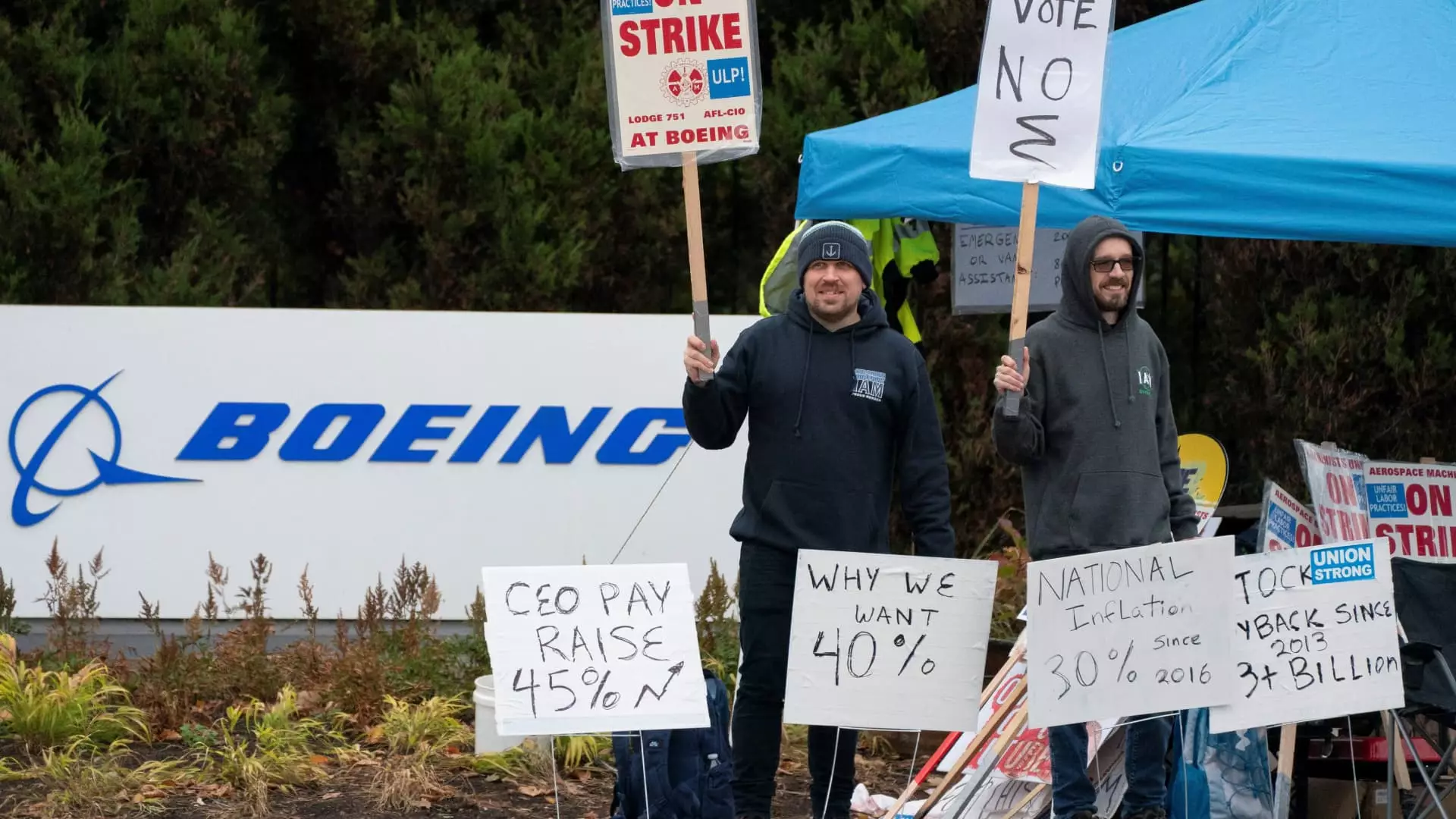The recent turmoil at Boeing highlights a significant intersection between labor rights and the aerospace industry’s pressing need to stabilize its operations. For seven weeks, machinists represented by the International Association of Machinists and Aerospace Workers District 751 have walked off their jobs, signaling a robust stand against the company’s previous contract proposals. The backdrop of this strike isn’t merely a quest for better wages; it reflects broader economic concerns, particularly in the Seattle area, where the cost of living continues to soar. As large technology firms expand their presence, the pressure on Boeing’s workforce grows, compelling the labor force to push back more aggressively.
Negotiated Offer: A New Hope?
Having experienced significant losses, Boeing sought to return its employees to work with a renewed offer aimed at addressing their grievances. The newly negotiated proposal promises substantial wage increases over the next few years, estimating an increase of 38%, raising the cumulative pay upswing to nearly 44%. Additionally, Boeing is offering significant one-time bonuses, giving employees choices that could either provide immediate financial relief or contribute to long-term savings through 401(k) contributions. These offerings illustrate Boeing’s recognition of its machinists’ sacrifices but also underscore the precarious balance manufacturers must strike between financial viability and retaining skilled labor.
The union’s stance is clear: they view the newly proposed agreement as a significant step forward that deserves their members’ approval. The sentiment reflects the union’s understanding that prolonged strike action could lead to weakened bargaining positions in future negotiations. Notably, the union’s message that asking members to stay on strike would not be in their best interest demonstrates a pragmatic approach to labor advocacy that aims to achieve wins in a volatile economic climate. As noted in statements from union leaders, reaching the current offer is a culmination of extended negotiations, and the alternative could be a regression in the terms offered to workers.
Wider Implications for the Aerospace Industry
The impact of this strike goes beyond the immediate financial implications for Boeing. With over 32,000 machinists idled, the strike affects aircraft production significantly, resulting in a slowdown that reverberates throughout the supply chain. Observers note that Boeing’s production woes not only threaten its profitability but also pose risks to the broader U.S. economy, particularly as the nation navigates through various economic challenges. The involvement of the Biden administration in negotiations emphasizes the strike’s importance, as it has ramifications for employment numbers that can sway public sentiment ahead of elections.
As Boeing navigates this tumultuous period, its leadership has shown a commitment to rebuilding both morale and operational stability. CEO Kelly Ortberg’s appeal for unity emphasizes the need for collaboration not just within the company but also with its workforce. The troubling economic losses Boeing has incurred—over $6 billion in the last quarter alone—have undeniably pressured executives to find solutions that will prevent further financial deterioration. The union’s concerns over moving production to a non-union facility raise additional questions about corporate strategies that could impact labor relations and drive further friction.
As the vote on the new contract occurs, both Boeing and its machinists stand at a crossroads. The willingness of the union to negotiate and arrive at a plausible contract proposal points toward an understanding of the broader economic landscape—a necessary compromise that can bring stability to a flagging company. However, the lingering questions about job security, compensation, and the future of Boeing’s manufacturing strategy will continue to loom large. For the machinists, this moment is about more than just a paycheck; it is a statement affirming their essential role in an industry marked by high stakes and increasing competition. The outcome of this negotiation may very well shape not just the future of Boeing but also the state of labor relations in the aerospace industry.

